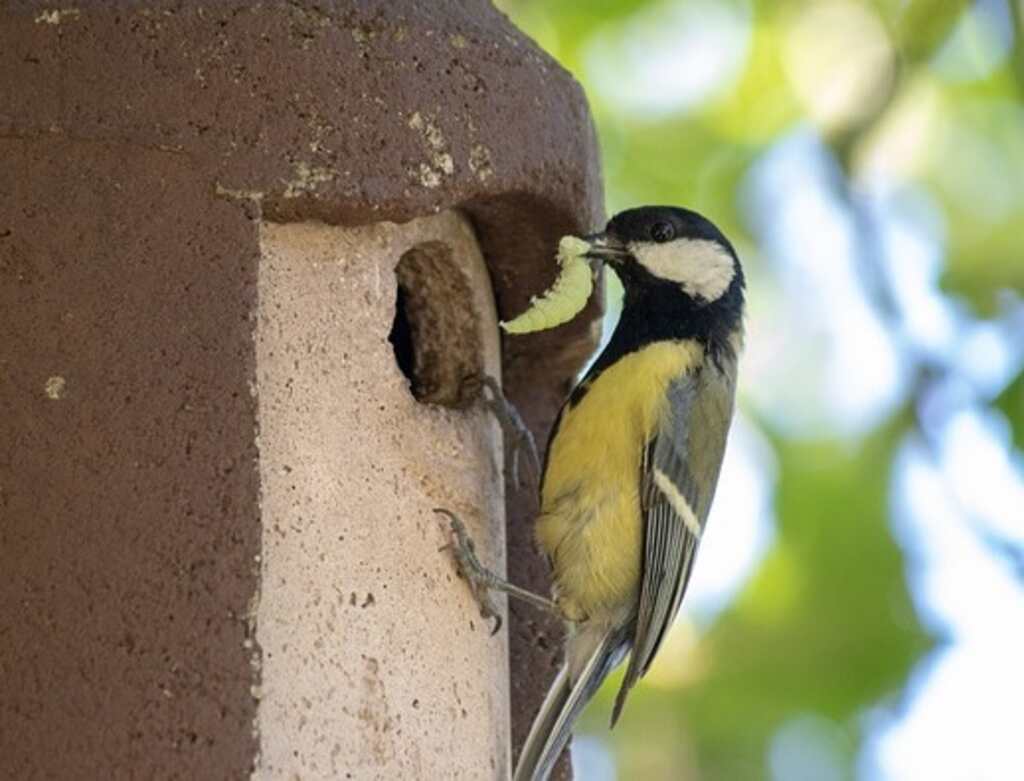Nature is a delicate balance, and every creature plays a vital role in maintaining it. Luna moth caterpillars, while fascinating, can become a challenge for those who cherish their gardens. Fortunately, several bird species naturally help control these caterpillar populations.
In this article, we’ll explore 10 remarkable birds that feast on Luna moth caterpillars, illustrating the beautiful circle of life in action. Discover how these avian allies contribute to a healthier ecosystem and how you can encourage their presence in your garden.
Table of Contents [show]
Luna Moth Caterpillar (Overview)
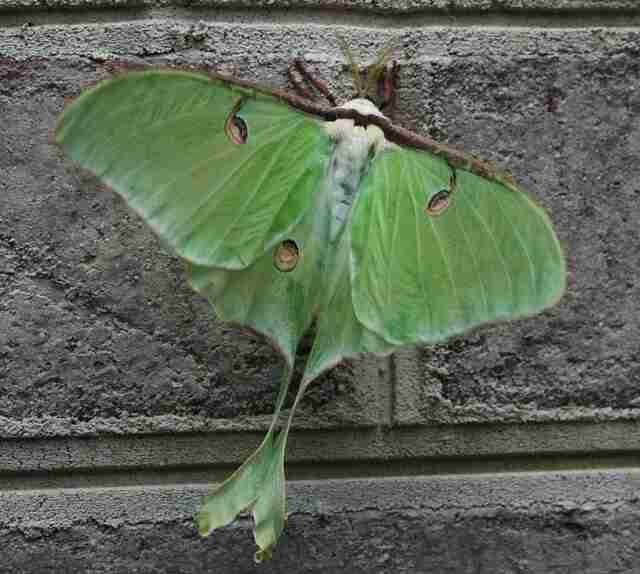
| Attribute | Description |
|---|---|
| Appearance | The Luna Moth Caterpillar has a bright green body with yellow stripes and small black dots. It has a horn-like protrusion on its rear. |
| Habitat | Luna Moth Caterpillars are found in deciduous forests and woodlands across North America. |
| Diet | The Luna Moth Caterpillar feeds on the leaves of various deciduous trees such as birch, hickory, and walnut. |
| Lifecycle | The Luna Moth Caterpillar undergoes several molts before spinning a cocoon and transforming into an adult moth. The moth lives for about a week and does not eat during this time. |
Description and Life Cycle
Luna moth caterpillars are fascinating creatures that play an important role in their ecosystem. These caterpillars have a distinctive appearance, with a bright green body, a series of yellow stripes along their sides, and long spines on their backs.
They typically feed on the leaves of hardwood trees, such as oak and hickory, and can consume large quantities of foliage, potentially causing significant damage to the plant’s health.
The life cycle of the Luna moth begins when the adult female moth lays her eggs on the underside of a leaf. These eggs hatch into tiny caterpillars that grow rapidly, shedding their skin multiple times as they do so.
Over the course of several weeks, a luna moth caterpillar will reach maturity and spins a cocoon in which it will transform into an adult moth.
Role in the Ecosystem
Luna moths are an important part of their ecosystem. As caterpillars, they consume large amounts of foliage, which can help to control the growth of some plant species.
Additionally, their cocoons provide food for predators such as birds and small mammals. As adult moths, they play a role in pollination, aiding in the reproduction of many plant species.
Threats to Luna Moth Populations
Despite their importance in the ecosystem, Luna moth populations are under threat from a variety of factors. One of the biggest threats is habitat loss due to deforestation and other human activities.
In addition, the use of pesticides and other chemicals can have a devastating impact on Luna moth populations, as well as other insect species.
Climate change is also a concern, as it can affect the timing of the Luna moth life cycle and their ability to find suitable habitats.
It is important to preserve natural habitats and reduce the use of harmful chemicals in order to protect Luna moth populations and their ecosystem.
Birds That Eat Luna Moth Caterpillars
Eastern Bluebird
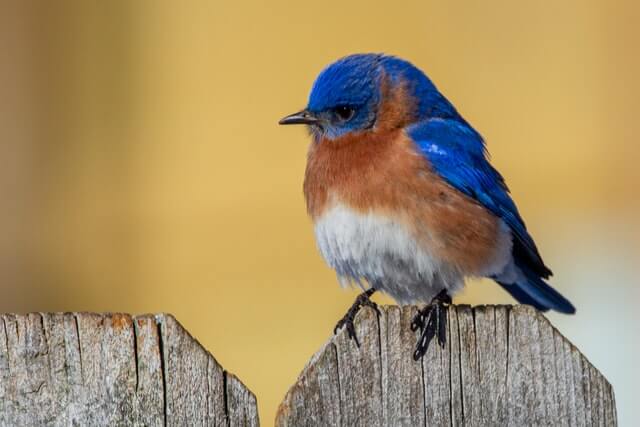
The Eastern Bluebird is a small, striking bird with bright blue feathers on its back and rusty red coloring on its breast. Found across eastern North America, from southern Canada to the Gulf of Mexico, the Eastern Bluebird prefers open habitats such as meadows, pastures, and orchards.
They feed primarily on insects and other invertebrates, including Luna moth caterpillars, which make up a significant portion of their diet. Eastern Bluebirds are cavity nesters, and will readily use nest boxes placed in suitable habitat. The Eastern Bluebird plays an important role in controlling Luna moth populations and preserving plant biodiversity.
By feeding on Luna moth caterpillars, they help to prevent these pests from causing significant damage to plant ecosystems. However, these birds offer many additional benefits to our ecosystems beyond Luna moth control. For example, they are important pollinators and seed dispersers, and can help to control populations of other insect pests.
Gray Catbird
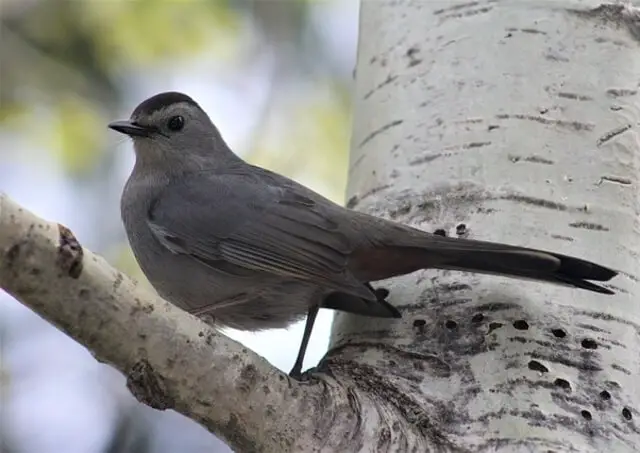
The Gray Catbird is a medium-sized bird with a distinctive black cap and rusty-red undertail. They are commonly found in deciduous forests, woodland edges, and shrublands throughout the eastern and central regions of North America. Gray Catbirds primarily feed on insects and fruits, but they are also known to consume small invertebrates, including Luna moth caterpillars. What makes Gray Catbirds unique is their feeding behavior.
They often flick their wings and tails while foraging to startle insects from their hiding places, and they also have a unique feeding method when it comes to Luna moth caterpillars. Gray Catbirds use their beaks to pierce through the caterpillar’s exoskeleton and then repeatedly whip the caterpillar against a branch until it is limp enough to be swallowed.
Beyond controlling Luna moth populations, Gray Catbirds also play a crucial role in seed dispersal and maintaining plant diversity. They are an important part of the ecosystem and their conservation is essential to maintaining the health of our natural habitats.
Cedar Waxwing
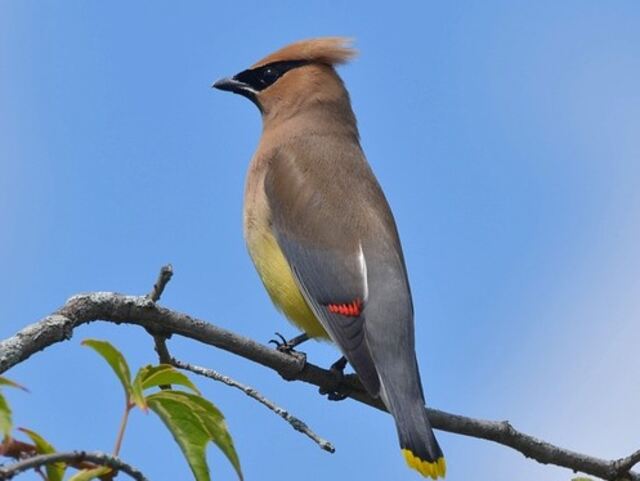
Cedar Waxwings are one of the most strikingly beautiful birds in North America, with their distinctive crest, black mask, and vibrant red, yellow, and brown plumage. They are found across most of North America, from southern Canada to the southern United States, and can be seen in a variety of habitats, including forests, orchards, and suburban areas.
Cedar Waxwings are known for their unique feeding behavior, which involves plucking fruit off trees and swallowing it whole. They also feed on insects, and have been observed eating Luna moth caterpillars. Their ability to consume these pests helps to control Luna moth populations, which can have a significant impact on plant ecosystems.
Beyond their role in controlling Luna moth populations, Cedar Waxwings provide a number of benefits to our ecosystems. They are important pollinators, spreading pollen as they feed on nectar from flowers. They also play a role in seed dispersal, helping to spread the seeds of the fruit they consume.
American Robin

The American Robin is a widespread and familiar bird in North America. They have a bright orange-red breast, gray-brown back, and a distinctive yellow bill. American Robins are commonly found in suburban areas, woodlands, and parks. Their diet consists of insects, earthworms, fruits, and berries. One unique feature of American Robins is their feeding behavior when it comes to Luna moth caterpillars.
They have been observed consuming these caterpillars during the day, often plucking them from the leaves of trees and shrubs. American Robins use their sharp eyesight to spot the caterpillars and then use their bills to break them into smaller pieces before swallowing them.
In addition to controlling Luna moth populations, American Robins provide numerous benefits to our ecosystem. They help disperse seeds and their droppings act as fertilizer, aiding in the growth of vegetation. They are also an important indicator species for environmental changes and habitat health.
Carolina Wren

The Carolina Wren is a small, brown bird with a distinctive white eyebrow and a long, curved bill. Found primarily in the eastern and southeastern regions of the United States, this wren is known for its loud, melodic song that can often be heard throughout the day.
They prefer to live in wooded areas with dense underbrush, where they build their nests in tree cavities or other natural cavities. Their diet consists mainly of insects and spiders, but they have also been known to eat small fruits and seeds. Interestingly, the Carolina Wren has been observed feeding on Luna moth caterpillars.
They prey on them by first thrashing them against a branch to break off the spines, then swallowing them whole. Beyond their role in controlling Luna moth populations, Carolina Wrens play an important part in forest ecosystems by helping to control insect populations and disperse plant seeds.
Northern Mockingbird
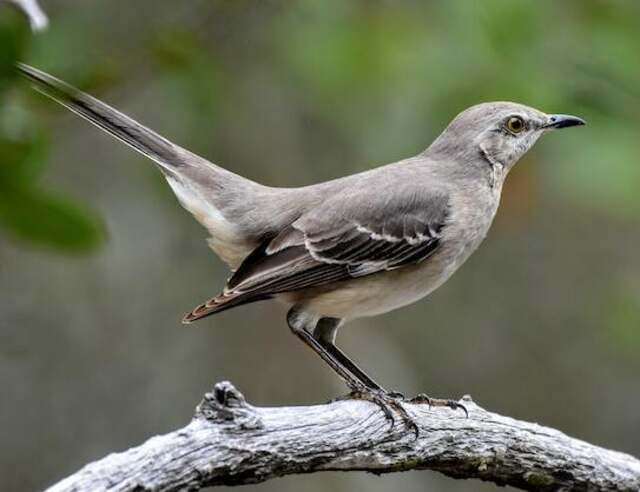
The Northern Mockingbird is a fascinating bird species known for its exceptional vocal mimicry skills. These birds are typically gray with white wing markings and have a slender build. Their range spans across North and Central America, with some populations residing in South America. They prefer open habitats such as grasslands, parks, and suburban areas.
The Northern Mockingbird’s diet is diverse, including insects, fruits, and berries. However, they are known to feed on Luna moth caterpillars as well. They are also adept at foraging on the ground, and can often be seen kicking aside leaves to uncover insects.
Beyond their role in controlling Luna moth populations, Northern Mockingbirds are also valuable to our ecosystems in other ways. They help to disperse seeds and contribute to plant pollination. Additionally, their vocal mimicry can be an important indicator of habitat quality and biodiversity.
Downy Woodpecker

The Downy Woodpecker is one of the smallest and most widespread woodpecker species in North America, measuring only 6-7 inches in length. They can be found in a variety of habitats including forests, parks, and suburban backyards. Their black and white plumage, short bill, and characteristic drumming sounds make them easy to recognize.
Despite their small size, Downy Woodpeckers are efficient predators, using their sharp bills to bore into trees and feed on insects and larvae. They have also been observed feeding on Luna moth caterpillars, providing an important service in controlling their populations.
In addition to their role in controlling insect populations, Downy Woodpeckers also play a crucial role in maintaining the health of forests. They create nesting cavities in trees that are later used by other bird species, contributing to the overall biodiversity of forest ecosystems.
Black-capped Chickadee
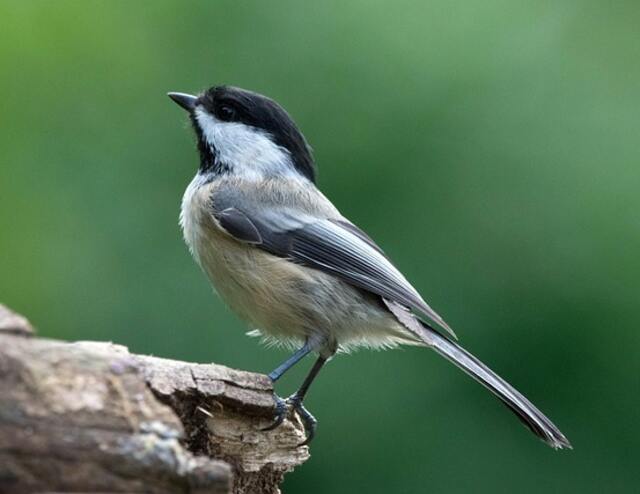
The Black-capped Chickadee is a small, active bird that is commonly found in deciduous forests and woodlands across North America. Known for their distinctive black cap and bib, these birds are also recognizable by their constant “chick-a-dee-dee-dee” call. In addition to their cute appearance and cheerful vocalizations, Black-capped Chickadees are important predators of insect pests, including Luna moth caterpillars.
These birds use their sharp beaks to peck into bark and wood, searching for insects to eat. Black-capped Chickadees are also known for their ability to store food for later use. They have been observed caching thousands of food items during the fall, which they rely on during the winter months when food is scarce.
Beyond their role in controlling insect populations, Black-capped Chickadees are also important indicators of forest health. These birds are sensitive to changes in their habitats and can provide valuable insight into the overall health and biodiversity of forest ecosystems.
Tufted Titmouse

The Tufted Titmouse is a small bird that belongs to the chickadee family. With its greyish-blue upperparts and rusty flanks, this bird has a distinct and attractive appearance. They are widely distributed in the eastern United States and are commonly found in deciduous forests and woodlands, as well as suburban areas with mature trees.
Their diet consists of a variety of insects, seeds, and nuts, and they are known to visit backyard feeders. When foraging for food, they can be quite acrobatic, hanging upside down to reach insects or seeds.In terms of Luna moth caterpillar predation, Tufted Titmice have been observed feeding on them, particularly during the late summer and early fall months.
They are known to search for caterpillars on leaves, branches, and even on the ground. Beyond their role in controlling Luna moth populations, Tufted Titmice play an important ecological role in dispersing seeds, particularly from hardwood trees.
Brown Thrasher
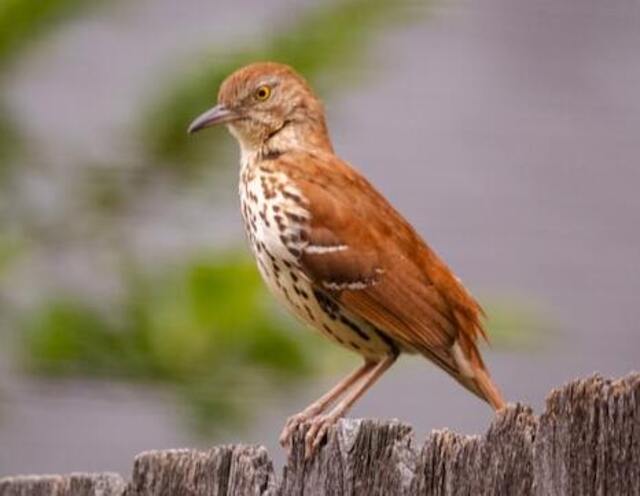
The Brown Thrasher is a large, brown-colored bird with a long, curved bill and a distinctive streaked breast. Found in a variety of habitats, including suburban gardens and forest edges, this bird is known for its loud and complex song, which it uses to defend its territory and attract a mate.
With a diet consisting of insects, fruits, and seeds, the Brown Thrasher plays an important role in maintaining the balance of local ecosystems. When it comes to feeding on Luna moth caterpillars, the Brown Thrasher is one of the birds that can help control their populations.
They often forage on the ground, using their long bills to probe the soil and leaf litter for insects, including Luna moth caterpillars. Beyond their role in Luna moth control, the Brown Thrasher is a valuable member of our natural communities, providing essential services such as pollination and seed dispersal.
Bird Population Threats and Preservation Strategies
Bird populations are under threat from a wide range of factors, from habitat loss to pollution and climate change. Without action to protect these species, many bird populations could be lost forever.
In this section, we’ll take a detailed look at some of the common threats to bird populations and the strategies that can be used to protect these species and their habitats.
Habitat Loss and Degradation
Habitat loss and degradation is perhaps the biggest threat to bird populations worldwide. As human populations grow, natural habitats are being destroyed to make way for development, agriculture, and other uses. This loss of habitat can lead to a decline in bird populations, as they lose their homes and the resources they need to survive.
Habitat fragmentation and degradation can also be major factors, as remaining habitat becomes too small or too low quality to support healthy bird populations. One strategy for protecting bird habitats is to establish protected areas where bird populations can thrive.
These areas may include national parks, wildlife refuges, and other conservation areas where human activity is restricted. Additionally, efforts can be made to restore degraded habitats, such as by replanting forests or restoring wetlands, to provide new homes and resources for birds.
Pollution
Pollution, particularly of air and water, can also be a major threat to bird populations. Air pollution can damage bird lungs and cause respiratory issues, while water pollution can impact the food chain and lead to contaminated food sources for birds. Pesticides and other chemicals can also have a negative impact on bird populations.
To address pollution threats, regulations can be put in place to limit pollution sources and require polluters to clean up their emissions. Additionally, efforts can be made to reduce pesticide use and promote more sustainable farming practices that are less harmful to bird populations.
Climate Change
Climate change is a growing threat to bird populations, as changing weather patterns can impact breeding and migration patterns, and alter the availability of food sources. Rising temperatures and sea levels can also lead to habitat loss and degradation, further exacerbating the threats to bird populations.
To address the threats of climate change, efforts can be made to reduce greenhouse gas emissions and promote more sustainable practices. Additionally, bird populations can be monitored to identify changes in breeding and migration patterns and inform conservation strategies.
Overall, protecting bird populations and their habitats requires a multifaceted approach that addresses the various threats these species face. By establishing protected areas, reducing pollution, and addressing climate change, we can work towards preserving these important species for generations to come.
Conclusion
In this article, we’ve explored the important role that birds play in controlling Luna moth populations and preserving plant biodiversity. By feeding on Luna moth caterpillars, birds help to keep these pests in check and prevent them from causing significant damage to plant ecosystems.
We’ve also looked at some of the common threats to bird populations and the strategies that can be used to protect these species and their habitats. Ultimately, protecting our natural ecosystems and the species that inhabit them is critical for maintaining the health and well-being of our planet.
As we continue to face environmental challenges like habitat loss, pollution, and climate change, it’s more important than ever that we take action to preserve our natural world. By supporting conservation efforts and advocating for policies that protect our planet, we can work towards a more sustainable future for all.
Related Post: 19 Birds That Eat Gypsy Moths (Gobbling Up The Problem!)

